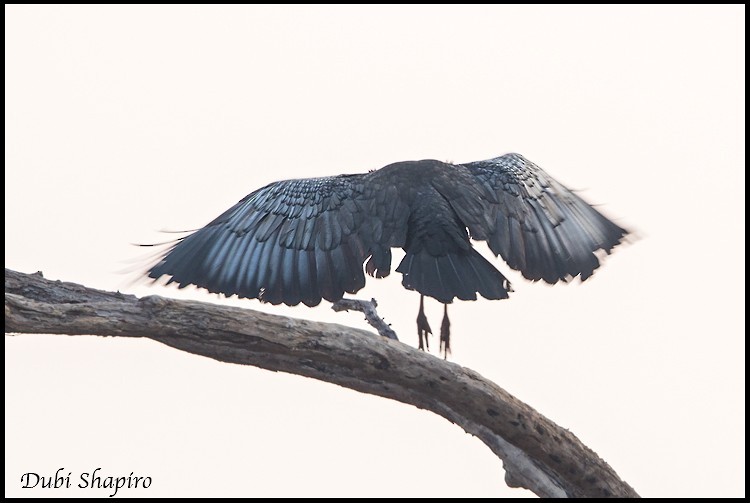Giant Ibis
A species of Asian Bare-headed Ibises Scientific name : Pseudibis gigantea Genus : Asian Bare-headed Ibises
Giant Ibis, A species of Asian Bare-headed Ibises
Botanical name: Pseudibis gigantea
Genus: Asian Bare-headed Ibises
Content
Description General Info
 Photo By Dubi Shapiro
Photo By Dubi Shapiro Description
This is, by far, the largest of the world's ibises. Adults are reportedly 102–106 cm (40–41.5 in) long, with an upright standing height of up to 100 cm (39 in) and are estimated to weigh about 4.2 kg (9.3 lb). Among standard measurements, the wing chord is 52.3–57 cm (20.6–22.4 in), the tail is 30 cm (12 in), the tarsus is 11 cm (4.3 in) and the culmen is 20.8–23.4 cm (8.2–9.2 in). The adults have overall dark grayish-brown plumage with a naked, greyish head and upper neck. There are dark bands across the back of the head and shoulder area and the pale silvery-grey wing tips also have black crossbars. The beak is yellowish-brown, the legs are orange, and the eyes are dark red. Juveniles have short black feathers on the back of the head down to the neck, shorter bills and brown eyes. It has a loud, ringing call, frequently repeated around dawn or dusk, a-leurk a-leurk. 
Size
1.06 m
Nest Placement
Tree
Feeding Habits
Giant Ibis primarily consumes frogs, insects, mole-crickets, and larvae, with eels, crabs, and fish also included. Giant Ibis selects habitats with abundant frogs and mole-crickets, forages by probing with its bill, and feeds in small groups, avoiding dry areas. Unique diet drivers and kleptoparasite challenges characterize giant Ibis's feeding behavior.
Habitat
Giant Ibis predominantly resides in lowland ecosystems, such as marshes, swamps, and seasonally inundated plains near lakes and major rivers, with a preference for semi-open deciduous forest terrains mixed with grassland and wooded flats. Their habitat is generally away from human settlements and spans across broader areas of Southeast Asia, with adaptations to congregate around permanent water sources during drier periods.
Dite type
Herbivorous
General Info
Feeding Habits
Bird food type
Species Status
The giant ibis is considered to be Critically Endangered on the IUCN Red List. The primary causes seem to be drainage of wetlands for cultivation and the epidemic clear-cutting of forest for rubber, cassava, wood pulp and teak plantations in south-east Asia. Habitats may also face ravaging due to local human warfare. Increasing human populations in Cambodia have in turn lead to disturbance and further lowland deforestation. The ibis may be hunted for meat by people and eggs may be predated by the Asian palm civet and the yellow-throated marten, with the species certainly unable to withstand sustained predation. A reduction in seasonal pools in forest, previously made by now depleted populations of megafauna (especially wild Asian water buffalo), may also negatively effect them. Local droughts, possibly related to global climate change, have appeared to have further compromised the breeding habitat and behaviour of the species. Some conservation efforts have been undertaken, including protecting nests by the installation of metal belts that prevent predators from accessing them, but the protection of ideal habitat and the increasing human populations in Cambodia continues to be a vexing challenge. Increasing ecotourism in the region and education to local people is clearly required for the species to successfully recover from the brink of extinction. The current population is estimated at 100 pairs, with a total population (including young and juveniles) of fewer than 500 individuals. However, even these figures may be optimistic. In 2018 the IUCN stated there were less than 200 mature individuals in the population. 

 Photo By Dubi Shapiro
Photo By Dubi Shapiro Scientific Classification
Phylum
Chordates Class
Birds Order
Pelicans and Relatives Family
Ibises and spoonbills Genus
Asian Bare-headed Ibises Species
Giant Ibis